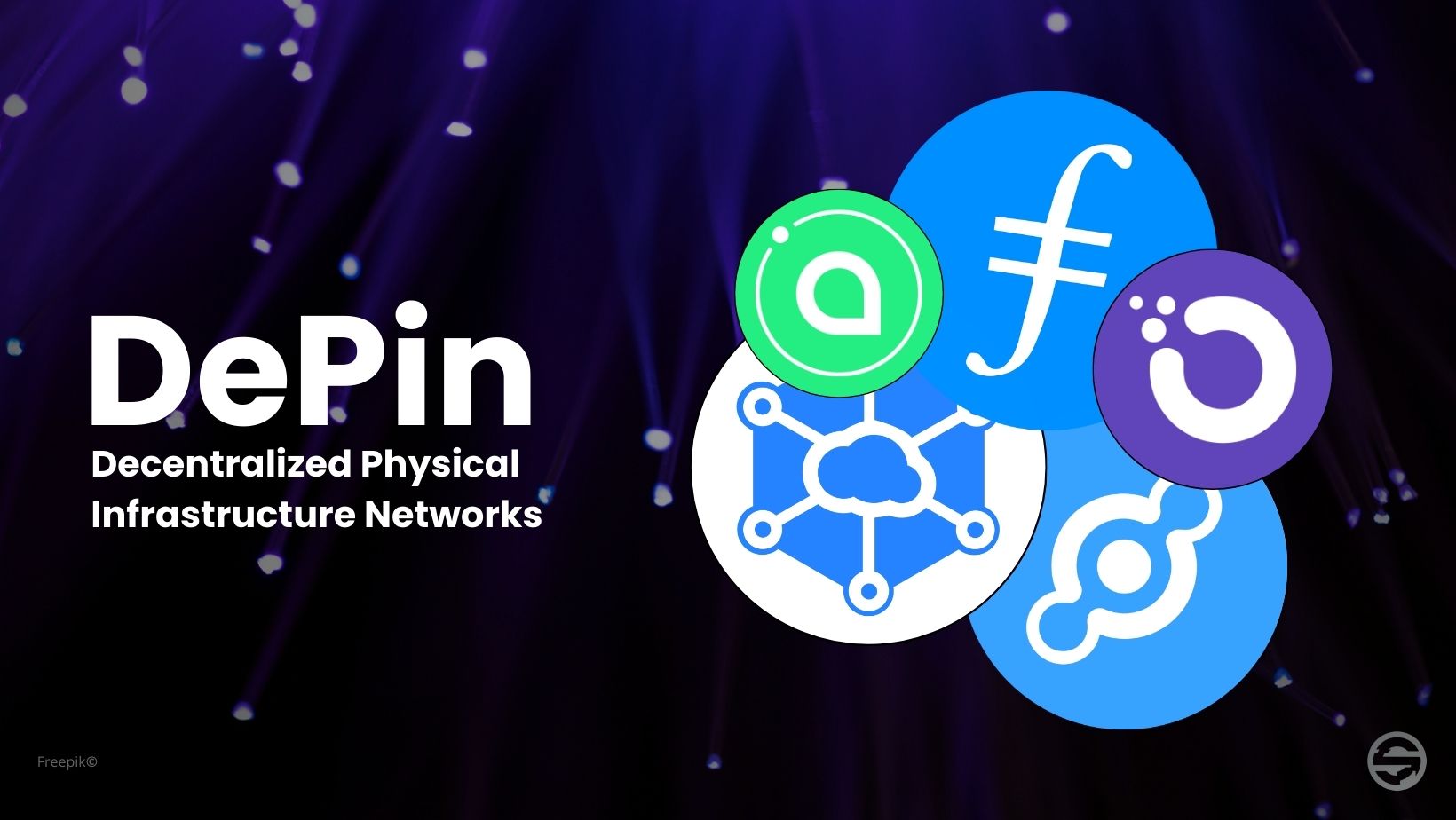
Table of contents
What is DePin?
DePin, or "Decentralized Physical Infrastructure Networks", refers to blockchain-based protocols that encourage individuals and communities to contribute the resources needed to build and maintain physical infrastructures. This includes a diverse range of areas, such as cloud storage, wireless networks, telecommunications, energy networks, renewable energies, sensor networks and data collection.
How does DePin work?
The initiatives developing around DePin are based on a basic but remarkable mechanism:
- Providing resources: Individuals contribute with available resources such as unused storage, under-utilized computing power, or even sensor data from their devices.
- Obtain rewards: In exchange for their contributions, users receive tokens, creating a sustainable business model.
- - Pooled and utilized: Collected resources are aggregated to build and maintain a decentralized network infrastructure.

Why is DePin important?
Beyond their innovative nature, DePin products stand out for their concrete, multi-faceted impact.
Firstly, cost reduction is one of the key benefits offered by DePin. By eliminating intermediaries and exploiting unused resources, this system significantly reduces infrastructure costs.
Secondly, the decentralized nature of DePin provides a significant advantage in terms of scalability. Compared with centralized systems, this approach enables easier and faster expansion, responding more effectively to growing user needs.
Furthermore, user empowerment is at the heart of Les DePin, which actively encourages participation, creating a more engaged community invested in its ecosystem. By encouraging individuals to contribute and be part of the network, DePin fosters a sense of shared responsibility and belonging, reinforcing community dynamics.
Finally, enhanced security is one of the fundamental aspects of decentralized networks such as DePin. Their inherently decentralized architecture makes them more resistant to censorship and manipulation. By eliminating single points of control, these networks reduce potential vulnerabilities, reinforcing the security of data and transactions. This enhanced resilience also promotes high transparency, as transactions are immutably recorded and verifiable by all network participants, offering greater trust and visibility over activities.
Conclusion
DePin is more than just a technological innovation. It's a potential catalyst for significant change in the way we build and manage our infrastructures. With its decentralized approach, DePin not only offers cost-effective and efficient solutions, it also paves the way for greater autonomy and resilience in an increasingly connected and technology-dependent world. DePin could eclipse other narratives and become the dominant narrative of this new bull market.
Source: https://coinmarketcap.com/academy/article/a-deep-dive-into-depin-decentralized-physical-infrastructure, consulted on 09.03.2024
Disclaimer: this is not financial advice. Satolix.io website aims to inform readers about Blockchain, cryptocurrencies and Web3. Any type of investment involves risk. Please do your due diligence and research the articles and projects presented on the site. Be responsible and don't invest more than your goals or financial means allow. In this regard, please read our page: Warning about virtual currencies.
Some articles on the site contain affiliate links, and using them to register on the site enables the site to grow through the collection of commissions. By doing so, you also make yourself eligible for a welcome bonus such as a voucher or reduced fees, for example.



 Blockchain, Security, Crypto, DeFi
Blockchain, Security, Crypto, DeFi 2024-03-09
2024-03-09
